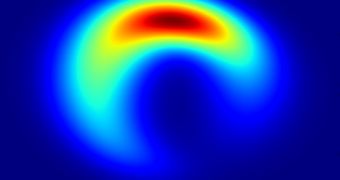Astronomers have known about black holes for a while now, there's plenty of evidence of their existence and there are even plenty of studies and research on the phenomenon.
So far though, no one has actually seen a black hole. Obviously, you can't really see a black hole since no light can escape it, so no light can hit your eye, or rather, your telescope for you to see it.
But that doesn't mean they are completely invisible, the absence of something can be just as telling as the presence.
One of the reasons why we don't have a photo of a black hole yet, even a supermassive black hole, is because they're very small, in the grand scheme of things.
Our telescopes and instruments simply aren't powerful enough to zoom in on a black hole, not even the one at the center of our galaxy.
But new technologies and tools will soon make it possible to actually see a black hole or, rather, the area immediately surrounding it.
In the interest of figuring out what astronomers will see when the first images come, scientists have used several models to predict what that first image will look like.
What they've come up with is a crescent shape rather than an asymmetric Gaussian, as was previously expected. Scientists explain the image via a simple phenomenon called Doppler beaming or relativistic beaming, similar to the redshift effect.
There's no way to see the actual black hole, but the matter very close to it will emit light, quite energetic light at that. What astronomers will see is the exact limit of the event horizon, the point beyond which light doesn't escape.
As gas is pulled in towards the black hole, it's heated and sped up enormously. Due to Doppler beaming, gas orbiting the black hole will appear brighter when it's coming towards us, i.e. the telescope, than when it's moving away, resulting in the image you see above.

 14 DAY TRIAL //
14 DAY TRIAL //